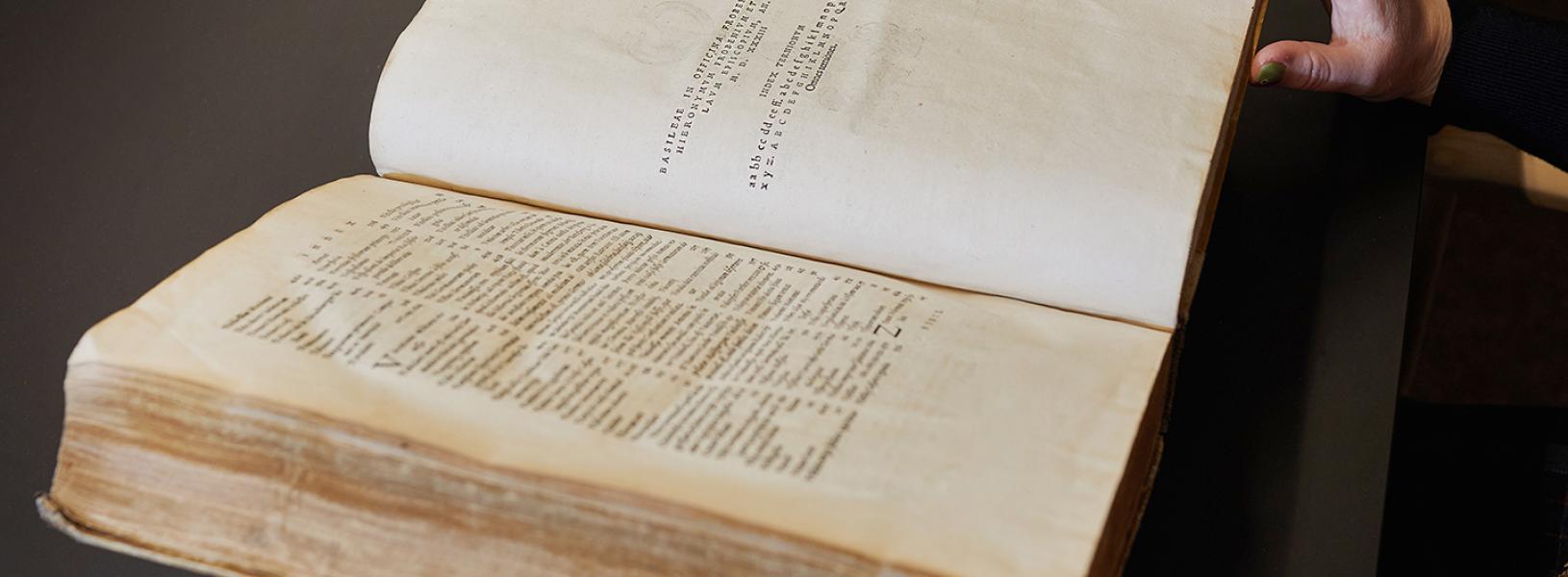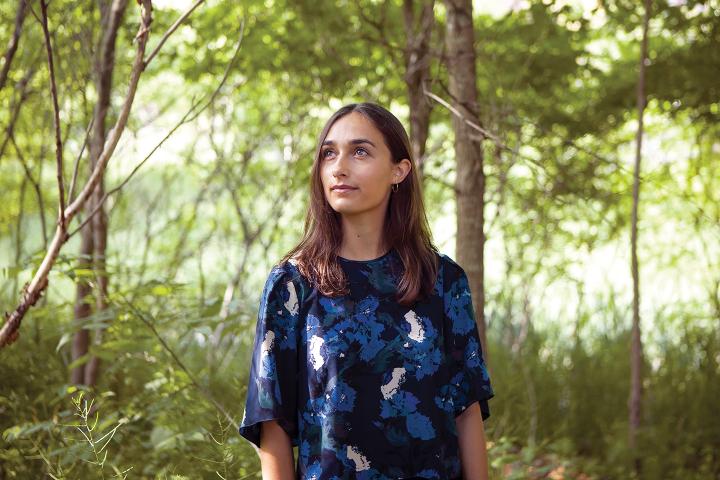When Haley Svensrud, Artsci’24, became the Bader Digital Humanities Undergraduate Research Assistant in 2022, she had no idea she would soon solve a mystery that would connect Queen’s to one of the fathers of modern physics.
Ms. Svensrud’s position was funded by Bader Philanthropies, Inc., with encouragement from the late Dr. Isabel Bader, LLD’07, who also helped family friend Michael Hatcher donate several of his 16th-century books to Queen’s. While shipping the collection from his Milwaukee home, Mr. Hatcher mentioned that one of the books, a mid-century edition of The Annals of Tacitus, may have once belonged to Sir Isaac Newton.
Mr. Hatcher bought the book at a now-defunct London auction house in the 1960s. Ms. Svensrud contacted the British Library and found a catalogue of the auction. “We were able to see the lot number,” she says. “It was marked as being in poor condition and it sold for a surprisingly low price.”
“It’s not what we would call poor condition today,” says Dr. Brendan Edwards, curator of the W.D. Jordan Rare Books and Special Collections at Queen’s Library. “It isn’t in perfect shape, but it’s also 400-plus years old. The auctioneers didn’t value it highly, and Mr. Hatcher got lucky. He didn’t realize what he had until later.”
The telltale signs confirming the book’s provenance include two bookplates inside the cover bearing the names of former owners. “Just having one bookplate wouldn’t necessarily mean it was Newton’s book,” Ms. Svensrud says, “but having both made it much more likely.”
There are other signs, too, including significant dog-earing. “Newton was known to dog-ear his books,” says Dr. Edwards, “and not just in the corner. He would often fold to point to a paragraph on the page, so the dog-ears could be large. Our book shows evidence of multiple dog-ears of different sizes.”
“All these clues are not evident at first glance,” Dr. Edwards adds. “Haley was able to exercise her historical research skills and, short of Newton having signed his name on it, everything lines up. I’d say we’re 99.9 per cent certain that this was his book.”
Dr. Edwards has notified the Newton Project, an Oxford-based group dedicated to preserving Newton’s legacy, of the book’s existence, and he and Ms. Svensrud expect a lot of scholarly interest in the years to come. In the meantime, it will remain, with the rest of Mr. Hatcher’s collection, in the Douglas Library vaults.


